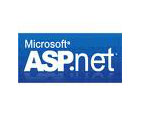
ASP.NET is a web application framework developed and marketed by Microsoft to allow
programmers to build dynamic web sites, web applications and web services. It was
first released in January 2002 with version 1.0 of the .NET Framework, and is the
successor to Microsoft's Active Server Pages (ASP) technology. ASP.NET is built
on the Common Language Runtime (CLR), allowing programmers to write ASP.NET code
using any supported .NET language. The ASP.NET SOAP extension framework allows ASP.NET
components to process SOAP messages.
After the release of Internet Information Services 4.0 in 1997, Microsoft began
researching possibilities for a new web application model that would solve common
complaints about ASP, especially with regard to separation of presentation and content
and being able to write "clean" code. Mark Anders, a manager on the IIS team, and
Scott Guthrie, who had joined Microsoft in 1997 after graduating from Duke University,
were tasked with determining what that model would look like. The initial design
was developed over the course of two months by Anders and Guthrie, and Guthrie coded
the initial prototypes during the Christmas holidays in 1997. Scott Guthrie in 2007
The initial prototype was called "XSP"; Guthrie explained in a 2007 interview that,
"People would always ask what the X stood for. At the time it really didn't stand
for anything. XML started with that; XSLT started with that. Everything cool seemed
to start with an X, so that's what we originally named it. "The initial prototype
of XSP was done using Java, but it was soon decided to build the new platform on
top of the Common Language Runtime (CLR), as it offered an object-oriented programming
environment, garbage collection and other features that were seen as desirable features
that Microsoft's Component Object Model platform didn't support. Guthrie described
this decision as a "huge risk", as the success of their new web Development platform
would be tied to the success of the CLR, which, like XSP, was still in the early
stages of Development, so much so that the XSP team was the first team at Microsoft
to target the CLR.
With the move to the Common Language Runtime, XSP was re-implemented in C# (known
internally as "Project Cool" but kept secret from the public), and the name changed
to ASP+, as by this point the new platform was seen as being the successor to Active
Server Pages, and the intention was to provide an easy migration path for ASP developers.
To inquire more about our Ajax Development,please
click here to contact us or email us at info@anitsolution.com